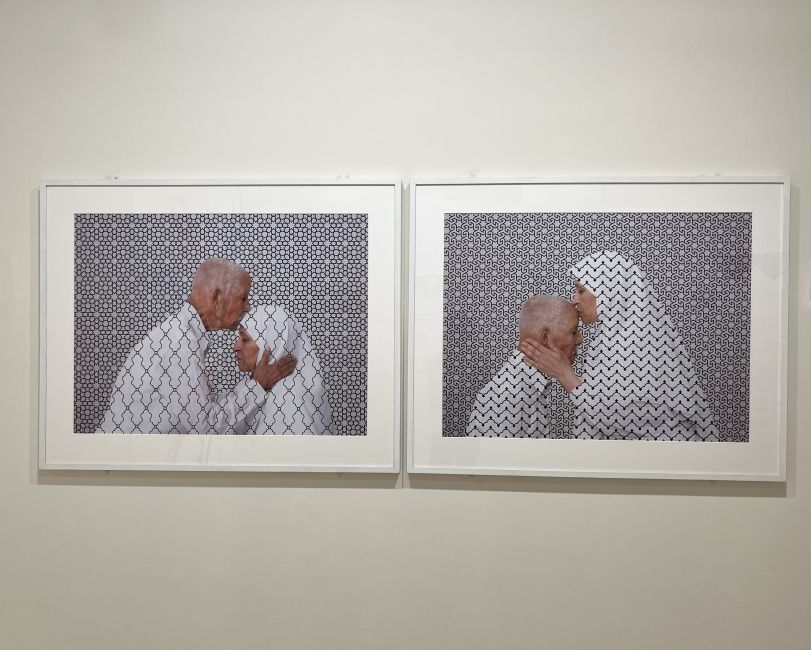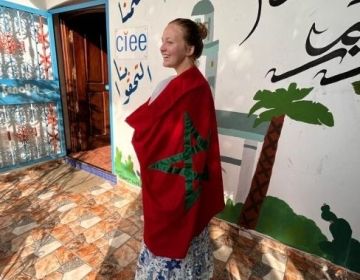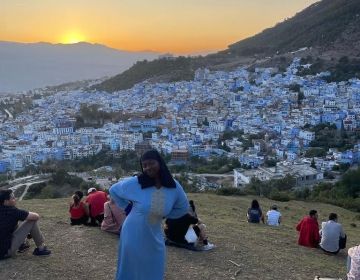I'm sorry / I forgive you: Finding Meaning in a Mirrored Image
This past week, I had the opportunity to visit the Mohammed VI Museum of Modern and Contemporary Art for the second time during my stay in Morocco. The museum, easily one of Rabat’s top attractions, features modern artists throughout Africa and the Middle East and is well worth the 20-dirham (2 USD) ticket for entry. Unfortunately, on my first visit, the main exhibit was closed for refurbishment, but the temporary exhibition of Benin’s contemporary art in “Art of Benin yesterday and today: from restitution to revelation” nevertheless provided a memorable afternoon.
But on my return trip, I was able to see the museum’s permanent exhibit, a revelation in its own right, showcasing the work of predominantly North African artists, who explore North African culture, politics, and emotion through various mediums. Several pieces throughout the exhibition caused me to pause and reflect, but none so much as the gallery’s final piece.
Libyan-Canadian artist Arwa Abouon’s diptych “I’m sorry / I forgive you” struck me in both theme and composition. Immediately apparent are the clashing black and white tessellations, forming the background and clothing of the subjects. The patterns draw on zellij, a traditional style of North African tilework, and their juxtaposition makes sustained concentration on the featured couple difficult.
More interesting to me, though, were the people themselves. In the pictures, Abouon’s parents mirror one another in supplication and forgiveness. It is not immediately apparent which is the forgiver and which the forgiven, offering an opportunity to reflect on our understanding of body language and the tenderness of letting go. The art’s dual reading is only reinforced through language, as the English title “I’m sorry / I forgive you” encourages a left-to-right reading, with husband apologizing first and wife forgiving. Indeed, this interpretation is how I first understood the piece. However, the Arabic portion of the plaque reads from right-to-left “Asifa / Usamihuk,” employing the feminine form of apology, encouraging a right-left interpretation of the work. This reading made me chuckle, as the pictures themselves were a tessellation, moving simultaneously in different directions through cultural and linguistic interpretation.
In this way, I had been moving through the entire exhibit in the wrong direction, imposing my own readings and cultural tendencies on the gallery. I was tempted, then, to retrace my steps, seeing what other pieces I had misread or misinterpreted. Before I could, though, a helpful museum employee read my contemplation as confusion and showed me to the gallery’s exit. I smiled and thanked him because I realized that it didn’t really matter. No matter how I had looked at the various pieces, it was always going to be in my own direction, both different from the artists’ but meaningful neverthless.
As I entered the gallery's foyer, I smiled again, remembering my disappointment at not being able to see the museum’s main exhibit on my first visit. I had, at least, visited the museum in the wrong order, and maybe that order had been just the right way for me after all.
Related Posts
On Fridays, We Eat Couscous
Couscous is a traditional Moroccan dish, eaten on Fridays - the day of congregational prayer. Huge groups gather around one big table a eat the dish together, normally by hand... keep reading
Moroccan Women's Football Team Making History
Football, football, football! Football, known as soccer in only a few countries, finds its origins all the way to the time of the Aztecs. However, the game we know today... keep reading
“Thank yo-”; “Mashi Moushkil!” - An Homage to Moroccan Hospitality
“Mashi Moushkil”, “Mashi Moushkil!”, “Mashi Moushkil?” Mashi Moushkil, (transliterated from Arabic), translates to no problem in Moroccan Arabic (Darija). If you ever visit the beautiful country of Morocco, you will... keep reading




